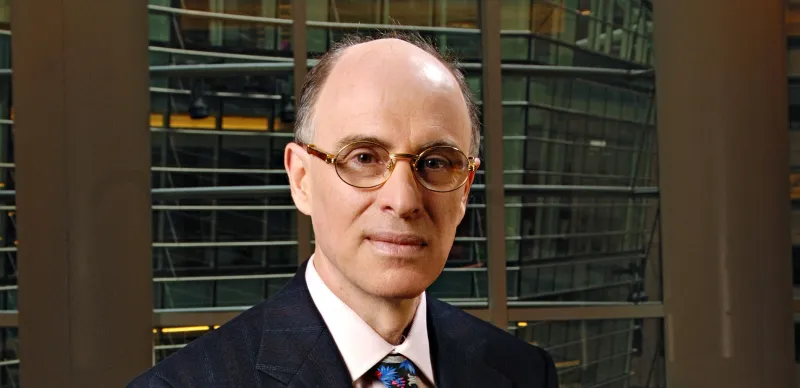For more than a year ongoing political battles within European Union leadership over the debt crisis have been matched by an equally fevered market debate over the future of the union itself. Many market strategists and pundits began the year forecasting long-term structural changes ranging from a multi-tiered union to an outright breakup. Dramatic divergence in EU sovereign debt yields since the second quarter of last year provides stark testimony to this ongoing uncertainty.
In the title of her 2011 kick-off piece, Societe Generale's Michala Marcussen playfully hit on the fact that this is the year of the rabbit in the traditional Chinese calendar to predict that this year policy makers globally will pull rabbits from hats – in other words that monetary and developmental policy will continue to be the dominant macro market force. While policy makers in Washington and Beijing are working on new conjuring tricks, the future of the Euro appears to be much less predictable as the diverging political realities of member states leave more questions than answers. In the report Marcussen and her team lay out the risk of forces such as German intransigence delaying decisive action, but for the most part they appear to take a decidedly glass-half-full view of the European economic situation on the longer-term.
Marcussen took the reigns as chief economist for SG last year after spending over a decade-and-a-half in the bank's asset management division where she oversaw strategy and research. Since moving to the investment bank she has proven to be a prolific and engaging writer whose daily economic comments have become popular with a broad audience in the trading community.
Institutional Investor contributor Andrew Barber interviewed Marcussen about the European debt situation and her view of the primary risk factors for policy makers there.
Institutional Investor: So in general, you are more optimistic on Europe than many observers, since you see political situation as ultimately resolvable. How do you see this resolution playing out?
Michala Marcussen: We’re all being put on what I call the "German diet" which is not very pleasant --it’s all about fiscal austerity, restraint, structural reform. I think that we’ll see more, bigger, better on the structural reforms, on the fiscal austerity and I don’t think this crisis will go away until Europe moves toward a “soft fiscal union”. This will probably include some kind of European bond, but also very strict rules on fiscal austerity and fiscal discipline for the medium-term. This will probably mean that in terms of the social climate in Europe it will continue to be difficult.
What’s important to understand is that although we’re quite positive on Europe in terms of what happens in the medium-term – we don’t believe that the Euro area’s going to blow up or anything like that – it will NOT be an automatic process. The politicians will get pushed to the edge every time, but every time we believe that they will choose, as we’ve seen in 2010, to come up with a solution that allows the Euro to continue.
II: Where do you see the biggest risks lurking structurally in the present tense?
MM: The biggest Achilles’ heel in the short-term is bank funding. It’s important to see the links between bank and sovereign funding. That’s also one of the main reasons why we think that this idea that the Euro area could just disintegrate and split in an orderly way is unrealistic, because when you look at the integration of the European banking sector, it’s so strong that that in itself is a big motivation for keeping the Euro area together.
Financial regulation is also an important point to focus on. Last year the focus was on new regulation, this year the focus is on how implementation takes place – though we do have long implementation horizons. Keep in mind that January 1st saw the arrival of a new European supervisory authority and, in that context, what happens in terms of bank stress tests will be quite important. Watch out for this in terms of policy – a rabbit out of the hat could be a European equivalent of the FDIC. It’s not something I see near-term but perhaps as a medium-term development.
II: Divergence in European sovereign yields has been a primary market narrative in recent months as spreads exploded but the absolute rate environment has also shifted significantly at the same time. With German and French yields rising since the second half of last year, are we looking at a looming risk of more political pushback as the absolute cost of financing weaker states’ debt increases? Clearly there has to be an inflection point where something gives.
MM: If you want to think about “inflection points” then look at the difference between nominal GDP growth and nominal interest rates because this is what determines your debt dynamics. If your nominal interest rate is above your nominal GDP growth then you’re basically in an area where your debt-servicing costs are increasing. In that respect, you’re right that if you get to a certain rate level the situation becomes unsustainable. It is important to qualify is a couple of points. First of all, public finances: not all debt is refinanced every year - in many cases it’s about 20% of the debt load that will be rolled over this year. It’s not a negligible part but it’s not like rolling over the full public debt load at current market interest rates. Second, at current levels of interest rates in France and Germany we’re nowhere close to levels that are unsustainable in any way. Even in the US I don’t think that we’re at levels that could be considered that dire.
The point is, we’re still a long way away from getting to levels where it becomes unsustainable. The other point to keep in mind is that what really matters is what’s happening to economic growth and I'd argue that a lot of the interest rate increase that we saw toward the end of last year was really linked to better growth perceptions as well as weakness in US treasuries. If it’s a perception of better economic growth that’s driving bond yields higher, then I don’t think it’s a major issue. If however it’s a perception of greater sovereign risk that’s driving bond yields higher then of course it becomes much more of a topic.






